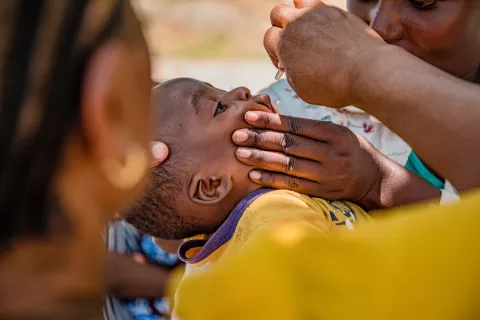By Juliet ETEFE
The percentage of children aged 24 to 35 months who were not fully vaccinated based on the national schedule increased by 15.1 percentage points between 2014 and 2022, the Ghana Statistical Services (GSS) survey report has revealed.
The report shows that almost three in every five (57.6 percent) in the aforementioned age range had not been fully vaccinated according to the national schedule in 2022 compared to about two in every five (42.5 percent) in 2014.
These statistics were from the Ghana Demographic and Health Survey (GDHS) data on children for whom vaccination information was recorded from their vaccination cards.
It further has it that more than half of children aged 24 to 35 months were not vaccinated in ten out of the 16 regions, highlighting that the highest percentage was recorded in the Northern Region where four in every five 81.5 percent had not been fully vaccinated.
Also, Western and Savannah, representing 68.5 percent and 66.9 percent respectively, had the next highest percentage of children in the age range not fully vaccinated according to the national schedule. On regional basis, the region with the lowest percentage of children who had not received all age-appropriate vaccines was Volta (26.7 percent) followed by Greater Accra (40.4 percent).
“The percentage of children aged 24 to 35 months not fully vaccinated according to the national schedule is marginally lower in urban areas (56.3 percent) relative to rural (58.9 percent). A higher percentage of girls (59.6 percent) had not been fully vaccinated in comparison to boys (55.6 percent).
“Vaccination coverage varies markedly by maternal education, ranging from seven in every 10 (71.6 percent) for children whose mothers have no education to four in every 10 (43.9 percent) for children whose mothers have higher than secondary education,” a GSS release stated in commemoration of World Immunization, which is observed every last week of April.
Being fully vaccinated according to the national schedule for kids aged 24 to 35 months means getting these shots: Bacillus Calmette-Guérin (BCG) vaccine (one dose); Oral Polio Vaccine (OPV) (birth dose); Hepatitis B vaccine (birth dose); Oral Polio Vaccine (OPV) (three doses); Inactivated Polio Vaccine (IPV) (one dose); Diphtheria, Pertussis, Tetanus, Hepatitis B, and Haemophilus influenzae type b (DPT-HepB-Hib) vaccine (three doses); Pneumococcal Conjugate Vaccine (PCV) (three doses); Rotavirus Vaccine (RV) (two doses); Measles and Rubella (MR) vaccine (one dose); Yellow fever vaccine; Measles and Rubella (MR) vaccine (second dose); and one dose of Meningitis A vaccine.
For children aged 12 to 23 months, the survey pointed out that more than two in every five (44.5 percent) were not fully vaccinated according to the national schedule in 2022, representing an increase of 6.7 percentage points from 2014 (37.8 percent).
To be fully vaccinated according to the national schedule for ages 12 to 23 months refers to receipt of one dose of BCG vaccine, OPV (birth dose), Hepatitis B vaccine (birth dose), three doses of OPV, and one dose of IPV, three doses of DPT-HepB-Hib, three doses of PCV, two doses of RV, one dose of MR, and the yellow fever vaccine.










